Many reasons lead pilgrims to the French Way, heading to Santiago de Compostela, but the main one is the search for a spiritual experience, self-discovery, and connection with other cultures — whether through nature or by walking through the many cities and villages along the way. The decision to leave everything behind for over thirty days requires planning and commitment, but one thing is certain: by the end of this journey, you will come back transformed.
In this article, we will follow the most popular route of the Caminho de Santiago, providing information about the most emblematic spots, the main challenges, and sharing stories of connections and experiences from pilgrims.
The oldest pilgrimage route in Europe
The pilgrimage along the Camino de Santiago is a multi-day journey that combines elements of a long-distance hike with a spiritual and personal quest. As a Multi-Day Hike — the name given to treks lasting two or more days without the need for camping — pilgrims face various challenges, from diverse terrain to unpredictable weather conditions.
In 2023, more than 446,000 people from all over the world completed the Camino de Santiago: 404,000 pilgrims on foot and over 22,000 by bicycle. Brazilians ranked 13th among the nationalities that departed for Santiago de Compostela.
Technical information:
- Destination: Santiago de Compostela — Galicia, Spain;
- Most popular route: French Way (around 800 km);
- Average duration of pilgrimage along the French Way: 30 to 35 days;
- How to travel the Camino de Santiago: on foot, by bicycle, and on horseback;
- Best times to go: May and June are great months to walk surrounded by flowers and green fields. September and October are also recommended. Despite the drier weather, there is an abundance of grapes on the vine and other fruits along the way, such as figs and cherries;
July and August are the busiest months due to the European summer holidays. In addition to the large concentration of people, the weather is quite hot, which makes walking more challenging; - If possible, avoid: April is a very rainy month, as is the second half of October, when private hostels start to close due to the low flow of people. From October 31 to April 1, the Pyrenees are closed due to the risk of snowstorms. The O Cebreiro section also cannot be done by trail, only by road;
- Pilgrim’s credential: to receive the certificate, you must complete at least the final 100 km on foot or the final 200 km by bicycle. The credential, the pilgrim’s passport, must be obtained at the Pilgrim’s Office and stamped at each stage. Until Sarria, the stamp must be obtained at least once a day, usually in hostels, but almost all commercial establishments have their own stamp. After Sarria, at least two stamps per day are required.
With origins dating back to the 9th century, the Camino de Santiago gained popularity due to the belief that the relics of the Apostle James are buried in the Cathedral of Santiago de Compostela. Over the centuries, millions of pilgrims of all nationalities and backgrounds have walked its paths.
“In the past, the pilgrimage had a character of self-punishment. In the Middle Ages, when someone was sentenced, they had to complete the Camino de Santiago. If they returned alive, they were set free,” says Ana Wanke, founder of Ana Wanke Turismo e Aventura, who has been offering guided trips and consulting for pilgrims since 2005.
Much has changed since then, and walking the paths to Santiago de Compostela now offers pilgrims a rich cultural immersion. “We see a lot of evolution in architectural styles along the pilgrimage. Most churches from the peak period of the Camino are inspired by Roman temples and were used for mass, to shelter pilgrims, and as hospitals — since many got sick and died along the way. That’s why we also see many cemeteries,” Ana explains.
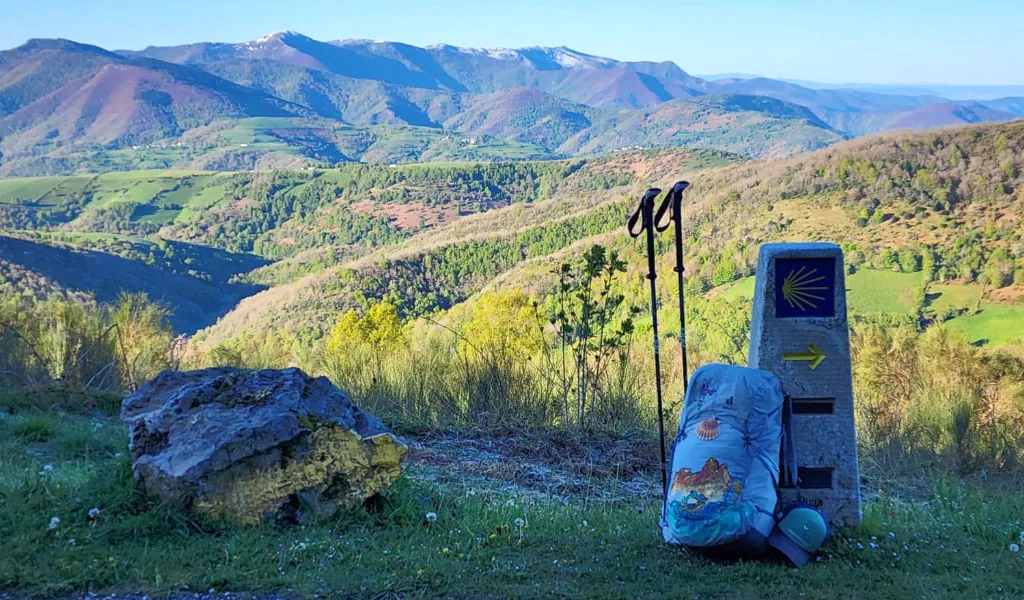
French Way: the most popular among pilgrims
There are many pilgrimage routes leading to Santiago de Compostela, departing from Portugal, Spain, and France. The most traveled since ancient times, the French Way begins in Saint-Jean-Pied-de-Port, in the French Pyrenees — the natural border between France and Spain. From there to Santiago de Compostela it’s about 800 km, with varied terrain and landscapes, usually completed in 30 to 35 days on foot.
Along the way, pilgrims pass through cities like Pamplona, Burgos, and Leon, crossing highways, cobbled streets, dirt roads, and steep climbs and descents. Churches, monasteries, architecture, quaint villages, and the variety of landscapes along the French Way enrich the cultural experience and renew the spirituality of thousands of pilgrims with each step.
Discover some iconic and history-filled places
<!–more→
O Cebreiro: village that houses the oldest church on the French Way
O Cebreiro — a stone-built Spanish village with Celtic characteristics — is the symbol of the Camino de Santiago revival, inspired by Father Elías Valiña, who is buried there and was the creator of the iconic yellow arrows painted starting in the 1980s on posts, walls, stones, sidewalks, and other places along the route to guide pilgrims. “In 1982, the Pope visited Santiago de Compostela for the first time. After that, Paulo Coelho wrote The Pilgrimage, a novel that popularized the Camino de Santiago. That’s why O Cebreiro is so emblematic for me,” Ana says.
The village is also home to what is considered the oldest church on the French Way: Santa María La Real del Cebreiro, built in the 9th century, which houses two relics from a miracle that took place on a stormy, snowy night. “Legend has it that when the priest saw a peasant arriving from afar — the only person present at the mass — he doubted the man’s intentions, assuming he was just there for bread and wine. At the moment of consecration, the host turned into flesh, and the wine into blood. The Virgin Mary leaned forward to see the miracle, and both her forward-leaning image and a Romanesque chalice from the 12th century remain in the church to this day.”
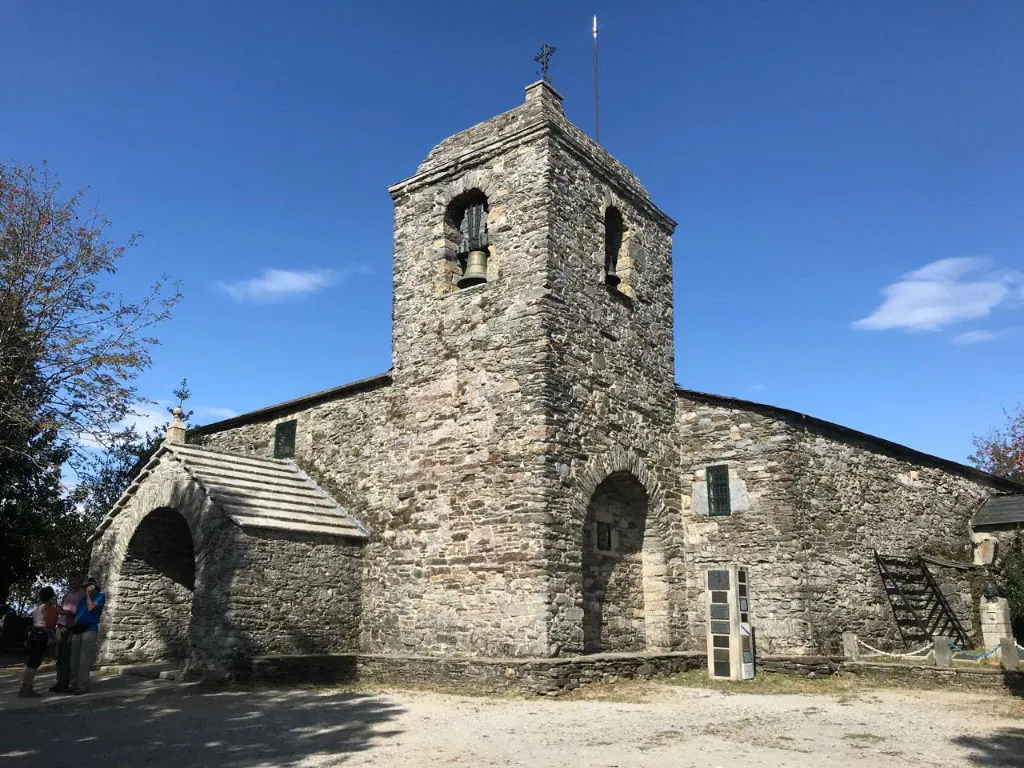
Santa María La Real Church of O Cebreiro / Photo: Ana Wanke
Burgos: Gothic richness along the way
Burgos is a city rich in Gothic art, with its main highlight being the Holy Metropolitan Cathedral Basilica of Saint Mary, known as the Cathedral of Burgos. Lit by the light filtering through its beautiful stained-glass windows, the church — built in the 13th century — features a paid museum that is worth every penny. At its center lie the tombs of the adventurer El Cid and his wife.
Ana Wanke recommends the city as a good resting spot for pilgrims. “It’s a very cultural city. In addition to the cathedral, there’s a beautiful park, several museums — including the Museum of Human Evolution — as well as the Castle of Burgos and the Monastery of Las Huelgas.”
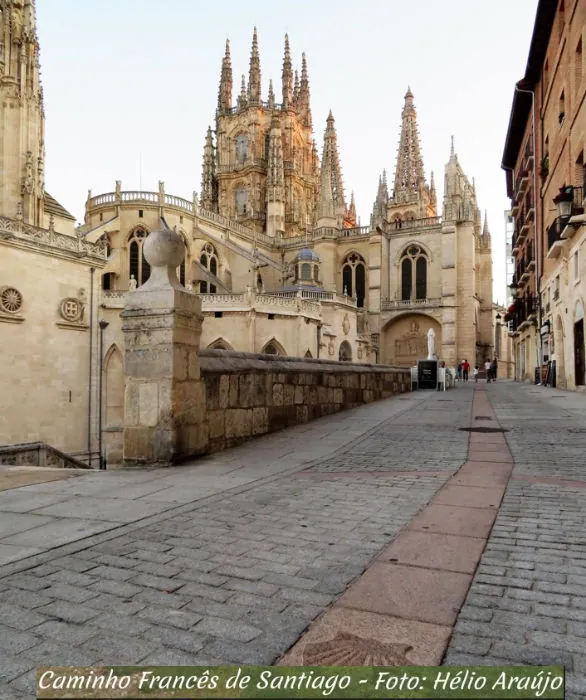
Cruz de Ferro: an emotional place for pilgrims
According to tradition, all pilgrims heading to Santiago de Compostela carry a stone with them along the way. “All the negative thoughts, sorrows, anguish, and negative energy are ‘placed’ into that stone. When you reach Cruz de Ferro, by which point two-thirds of the journey is behind you, you’ve already identified what was a real problem and what was imaginary, you’ve cried, laughed, and gone through a lot. Then, you get rid of your stone at the foot of the cross,” says Ana.
For Pedro Lacaz Amaral, reaching Cruz de Ferro was a magical moment: “Right after I left my stone, which was small but heavy, my life purpose became absolutely clear.”
Cruz de Ferro is located at the highest point of the French Way, at about 1,500 m of altitude, and offers a stunning view.
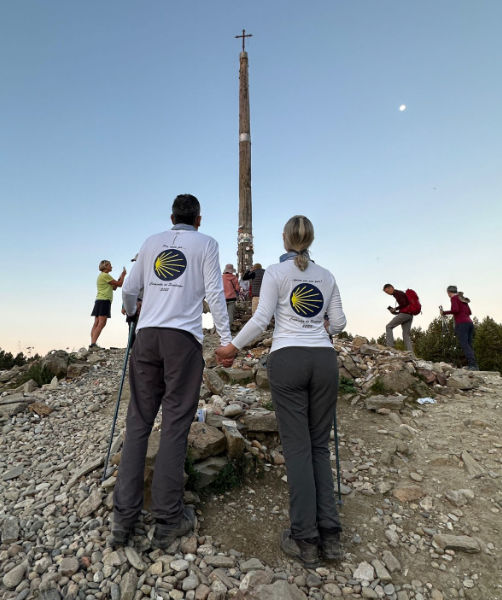

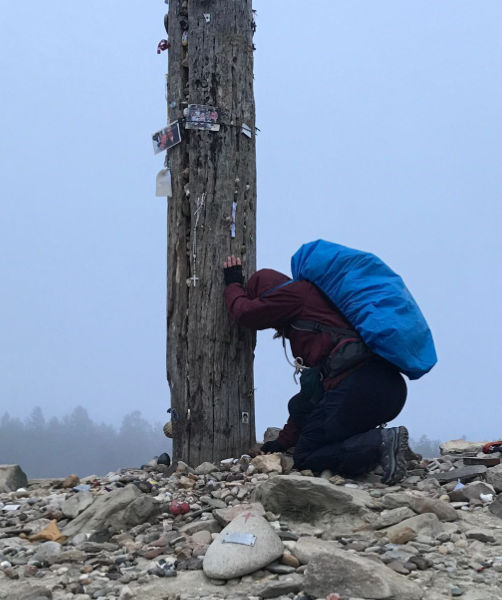
Puente La Reina: where all paths meet
Located in Navarra, a small Spanish municipality, Puente La Reina is the point where routes from different parts of Europe converge, uniting pilgrims from all origins on one path toward Santiago de Compostela.
“Puente La Reina is a place of rare beauty. It was there, amid history and encounters with wandering souls, that I met Joelma at the Estrella Guia hostel. She would later help me rent the bike that became essential to completing my Camino. By coincidence, she is from the same city as my mother’s family, Guaratinguetá, in the Paraíba Valley, São Paulo, where I spent much of my childhood,” shares Pedro Lacaz Amaral.
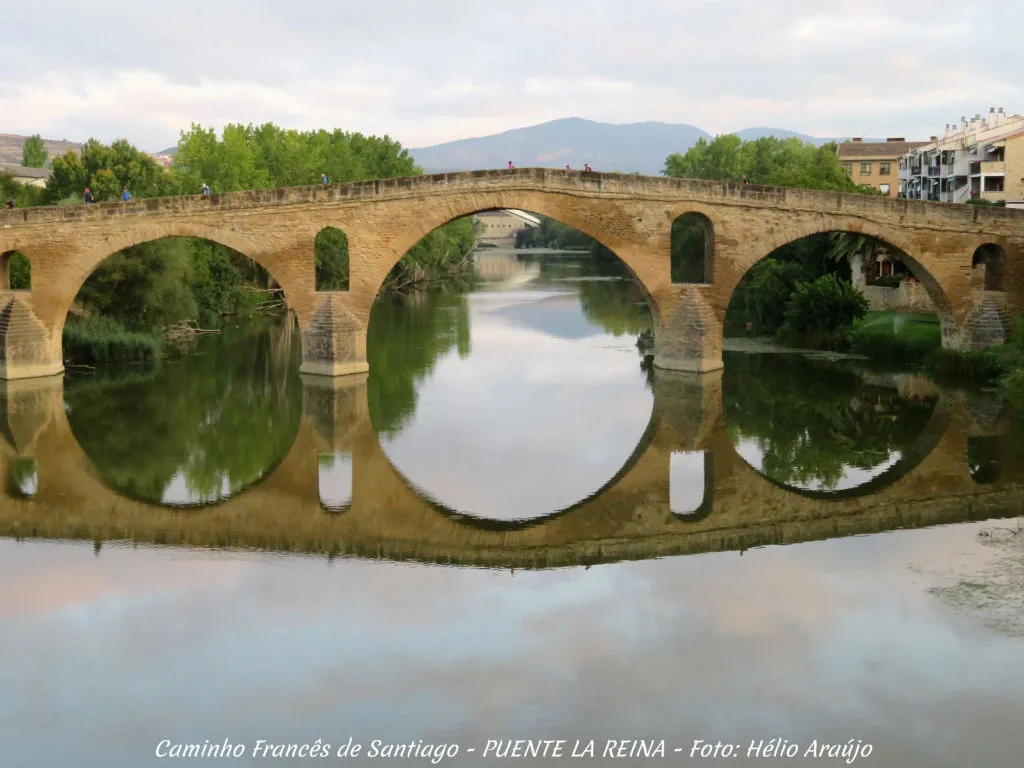
Stunning views
With his sharp eye, Hélio Araújo — journalist, photographer, creator of the Pédcast do Caminho, and organizer of the book “Caminho de Santiago: 25 visões peregrinas” — also highlights places with breathtaking views of several cities. “Alto do Perdón, O Cebreiro, and Cruz de Ferro are iconic, with amazing scenery. At Alto do Perdón, where the iron sculptures honoring pilgrims are located, the view is beautiful,” says Hélio, who has done the Camino de Santiago five times along different routes.
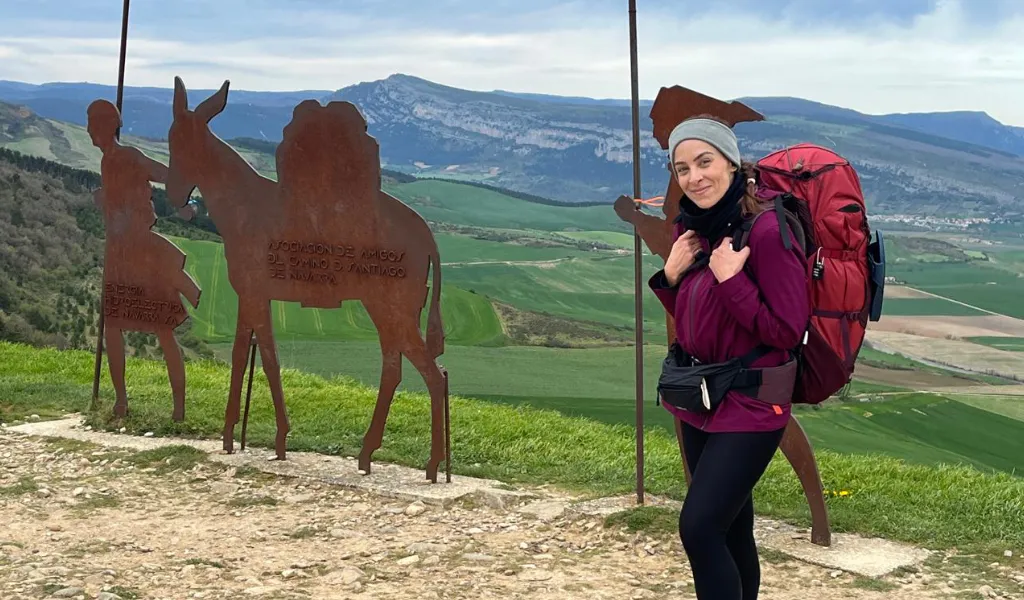
Marianna Sergio at Alto do Perdón
Transformative connections that happen on the Camino de Santiago
In addition to the cultural journey and immersion in nature, the Camino de Santiago allows pilgrims to connect with other people, their stories and experiences, which makes the experience even more transformative. “People come from many countries, of all ages. I made friends with an 80-year-old French woman named Mona. She didn’t speak a word of English, and I didn’t speak French, but we understood each other very well. She was walking alone and doing the Camino for the seventh time,” says Marianna Sergio, from São Paulo.

Marianna Sergio and Mona
Psychologist Luiz Henrique, from Espírito Santo, set out on the pilgrimage driven by the challenge and the desire for spiritual recovery. He found comfort in people during both the best and most difficult moments of the journey. “The time you spend talking and living day by day with others is wonderful. I received a lot of support from many pilgrims who crossed my path.”
For Pedro Lacaz Amaral, forming meaningful connections can turn any challenge into an enriching experience. “There were many stories along the way: I met amazing people from different countries, had deep conversations about philosophy, spirituality, and life. In the end, those connections and experiences helped me find clarity and purpose — something I was searching for and found on the Camino de Santiago,” says the founder of Gear Tips, who aimed to reach Santiago on his 50th birthday — and he did!
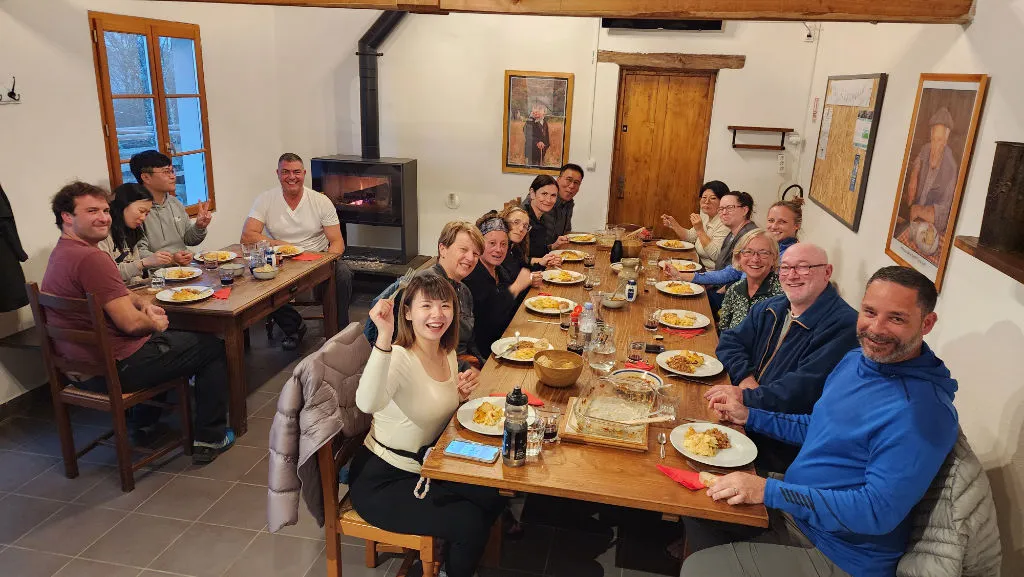
Pedro during dinner at Albergue Borda
Main challenges of the French Way
The Pyrenees mountain range
The French Way begins with a challenge for pilgrims: crossing the Pyrenees, the natural border between France and Spain, between the cities of Saint-Jean-Pied-de-Port and Roncesvalles. The section is mostly dirt road and includes 20 km of uphill trekking, followed by a descent of about 5 km. According to Ana, some people choose to split this stretch over two days.
Despite being difficult, Hélio Araújo emphasizes the beauty of the place: “I left the hostel, located 8 km from Saint-Jean, with beautiful sunshine and animals all around. As I climbed higher, wind, rain, and fog arrived. I couldn’t see anything in front of me.”
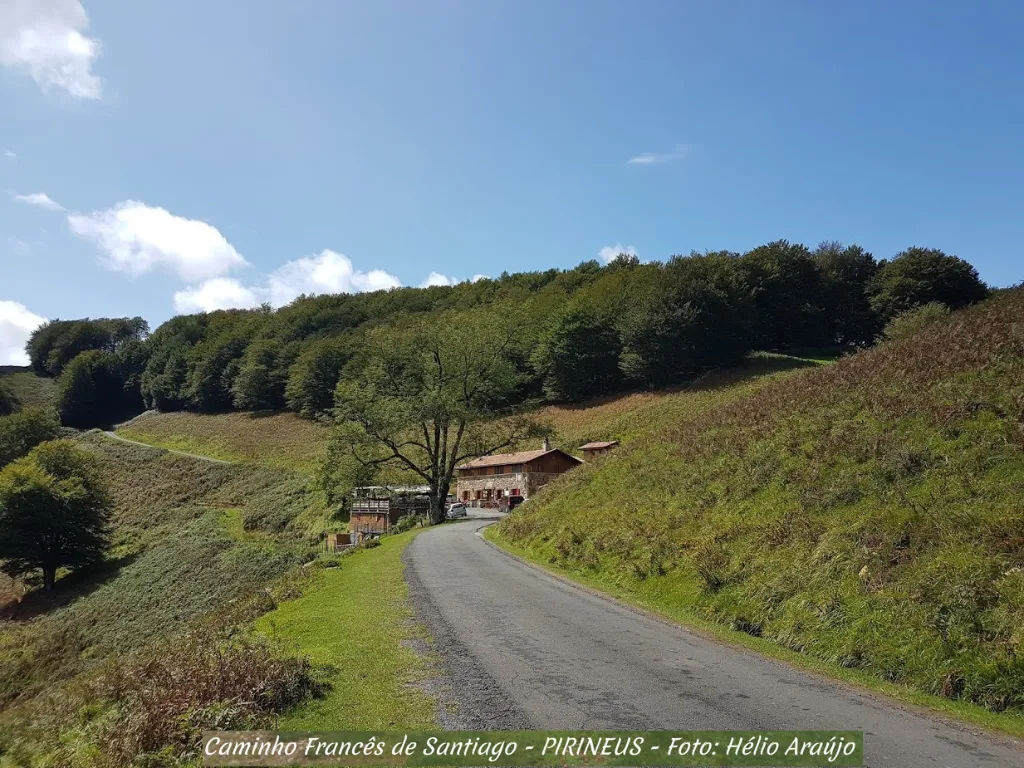
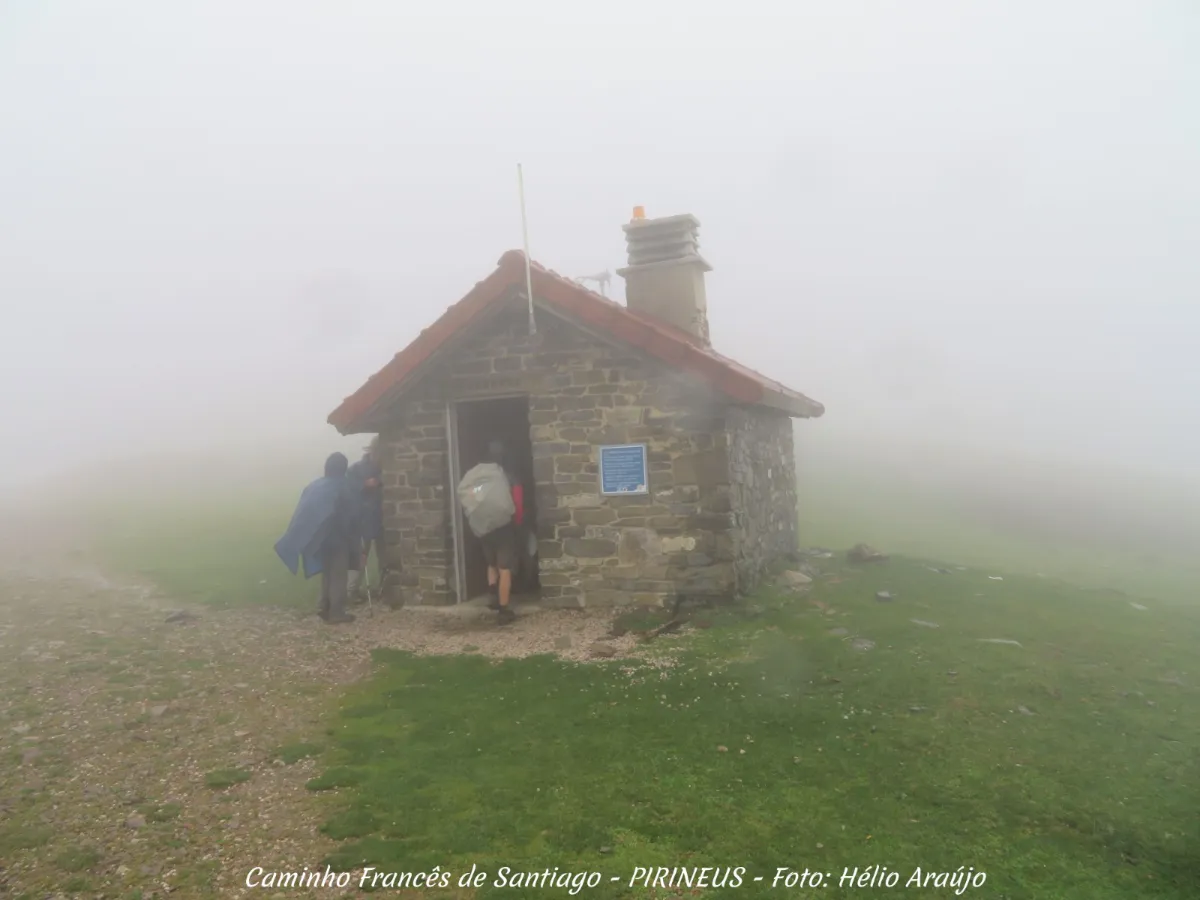
In addition to the steep ascent, another point of concern in the Pyrenees is the weather, which may change suddenly and lead to the closure of the natural route to Roncesvalles. Although the official closure period is from October 31 to April 1, it may be shut down in other months for safety reasons.
Pedro Lacaz Amaral started his pilgrimage in the first week of April. His plan included the ascent via the Napoleon Route and a stay at Albergue Borda, located along the mountain slope. There was a forecast of snow, and the route was expected to be closed.
The night before, Pedro received a weather update predicting temperatures between 3 and 8 ºC with winds of 50 to 70 km/h. Equipped with the proper gear, Pedro and two fellow pilgrims he met at the hostel successfully crossed the Pyrenees via the Napoleon Route. “We left early, at dawn. It was indeed very cold and windy, but we were prepared. We reached Roncesvalles safely after nearly 6 hours of walking through a relentless wind that sometimes forced us to crouch to avoid being blown away.”
In this article, Pedro recounts the experience and presents the recommended clothing for cold days on the Camino de Santiago.
Crossing the mesetas: a long and uneventful path
The mesetas stretch begins in Burgos and ends in León. Although the area is historically rich and follows a Roman road, pilgrims often describe it as the most monotonous part of the Camino. The daily hike of around 25 km, with little to no scenic interest, dry vegetation, and no shade, takes about seven days to complete.
After much resistance and severe foot pain, psychologist Luiz Henrique completed the final 9 km by bicycle. “It was the stretch I complained about the most to my companions. If I did the Camino again, I wouldn’t walk through the mesetas. The landscape is very dull, and the ground is full of rocks.”
On the other hand, according to Ana, the lack of distractions is an opportunity for inner reflection and introspection. “This is the main challenge for many people. During the Camino de Santiago, it’s natural to go through different phases, and the mesetas are really when you start purging a lot of things so that, afterwards, you reach the Cruz de Ferro. It’s in this part that the cleansing happens!”
For Hélio Araújo, the mesetas are the ideal stretch for life reflections. The journalist and photographer advises pilgrims to walk alone for parts of this section: “I was accompanied by someone I had met earlier, but we kept a distance of 500 m to 1 km most of the time. We’d meet up again during snack breaks. Many people choose to skip this stretch, but I don’t recommend it. While walking, you see certain vegetation, rivers, and other beauty from afar. The place becomes special because of the whole experience.”
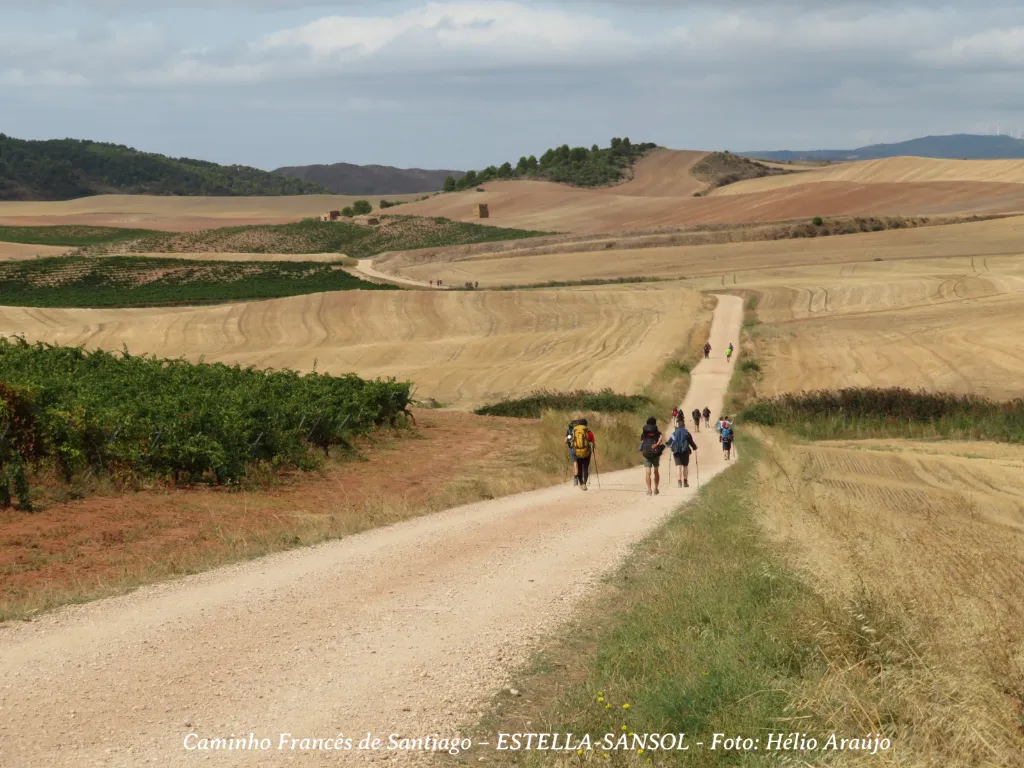
Steep climb to reach O Cebreiro
The O Cebreiro climb — the last mountain on the Camino de Santiago — can be intimidating for first-time pilgrims, as it requires an 8 km ascent at the end of a full day’s walk. However, Ana Wanke notes that the stretch is less challenging than the Pyrenees and offers a stunning view. The tip is to pace yourself during the walk so you have enough energy to finish strong.
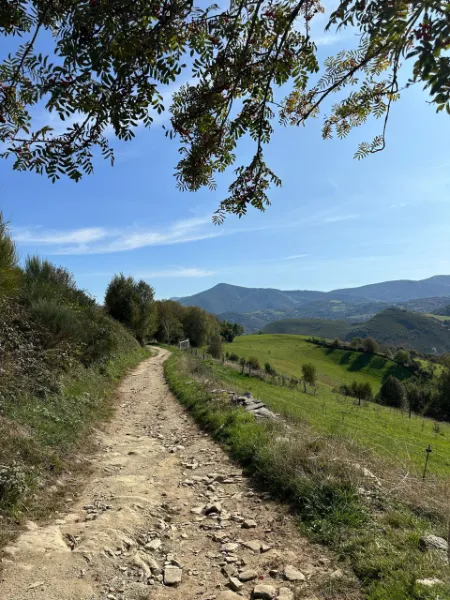
Steep descents of Zubiri and Molinaseca
In the first few days of the journey, the sharp descent to Zubiri — in the Esteribar Valley — requires extra attention to the knees. However, the descent to Molinaseca, after Cruz de Ferro, is even more difficult according to Ana, due to the rocky and uneven trail. “Just like in life, the ascents are tough, but you keep pushing and get there. Going down is faster — but it can hurt.”
¡Buen camino!
This post is also available in: Português (Portuguese (Brazil)) Español (Spanish)
